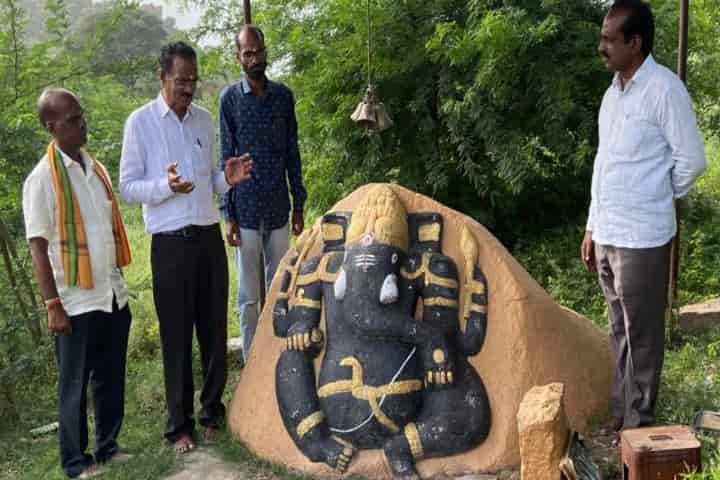When a team of historians and archaeologists visited Kandur village of Addakal Mandal in Telangana on June 22, where the Iron Age burial structures were sited, they were both excited and alarmed. “Tomorrow may be too late” they said after inspecting the priceless items that had been painstakingly unearthed.
In course of their visit the team found that the 3,500-year-old burial sites, representing the funerary practices of the Megalithic period, were facing a serious threat. The threats were from agricultural activities and operations by the local farmers and according to them lack of action will result in their complete wiping out.
Talking to the Express News Service, Dr. E Sivanagi Reddy, archaeologist and Buddhist expert consultant at Buddhavanam Project, TSTDC and CEO, Cultural Centre, informed that out of more than 100 megalithic burial sites, which were once referred to as Rakasigulla Chalka, only four structures remain today. “It is sad to know that only four structures are seen now and tomorrow it may be too late to protect them.”
Also read: Key digitally restored painting spotlights India's ancient tradition
Elaborating on what makes these sites different and unique, is that they lay in two circles. He observed: “Unlike the usual practice of erecting such burial structures in a single circle of huge boulders, the structures in Kandur are a rare phenomenon as they are erected in two circles. The other unique aspect of the sites is that they have polished blackware and redware (pottery), which were found when local farmers removed some structures in the past.”
He said the burial mounds in its circular form with a radius of 5.0 metres consists of 20 to 25 natural boulders. Considerable quantities of polished black ware, red ware and black and red ware (pottery) surfaced during the removal of the structures by the farmers in the past. “These burials, along with funerary goods belonging to 1000 BC, are in danger and preserving them for posterity is the need of the hour,” said Reddy.
In course of their survey, they also noticed remains of potsherds of the Satavahana period, hero stones, and Ganesha, Garuda and Mahishasura Mardini sculptures scattered in and around the village.
Also read: China’s Buddhist roots in India run deep
This region historically once was the capital of the Kanduru Cholas who ruled the region between 1025-1248 AD as the subordinates of Chalukyas of Kalyana and the Kakatiyas.
Besides this the team also undertook inspection of an exquisite sculpture of Chennakesava of the Kalyani Chalukyan period in 12th Century AD unearthed recently but kept uncared for on the roadside.
Reddy sensitised the village sarpanch on the historical and archaeological significance of artefacts and appealed to the sarpanch to preserve it for posterity. He convinced the villagers to collect all scattered sculptures and keep them at one place and to develop a sculpture garden near the Ramalingeswara temple in Kanduru to safeguard them for future generations.




















